Navigating the different grades of beef can seem overwhelming, but understanding the USDA grading scale makes it easy to pick the perfect steak or roast. This guide breaks down Prime, Choice, and Select beef so you get the right quality for your needs.
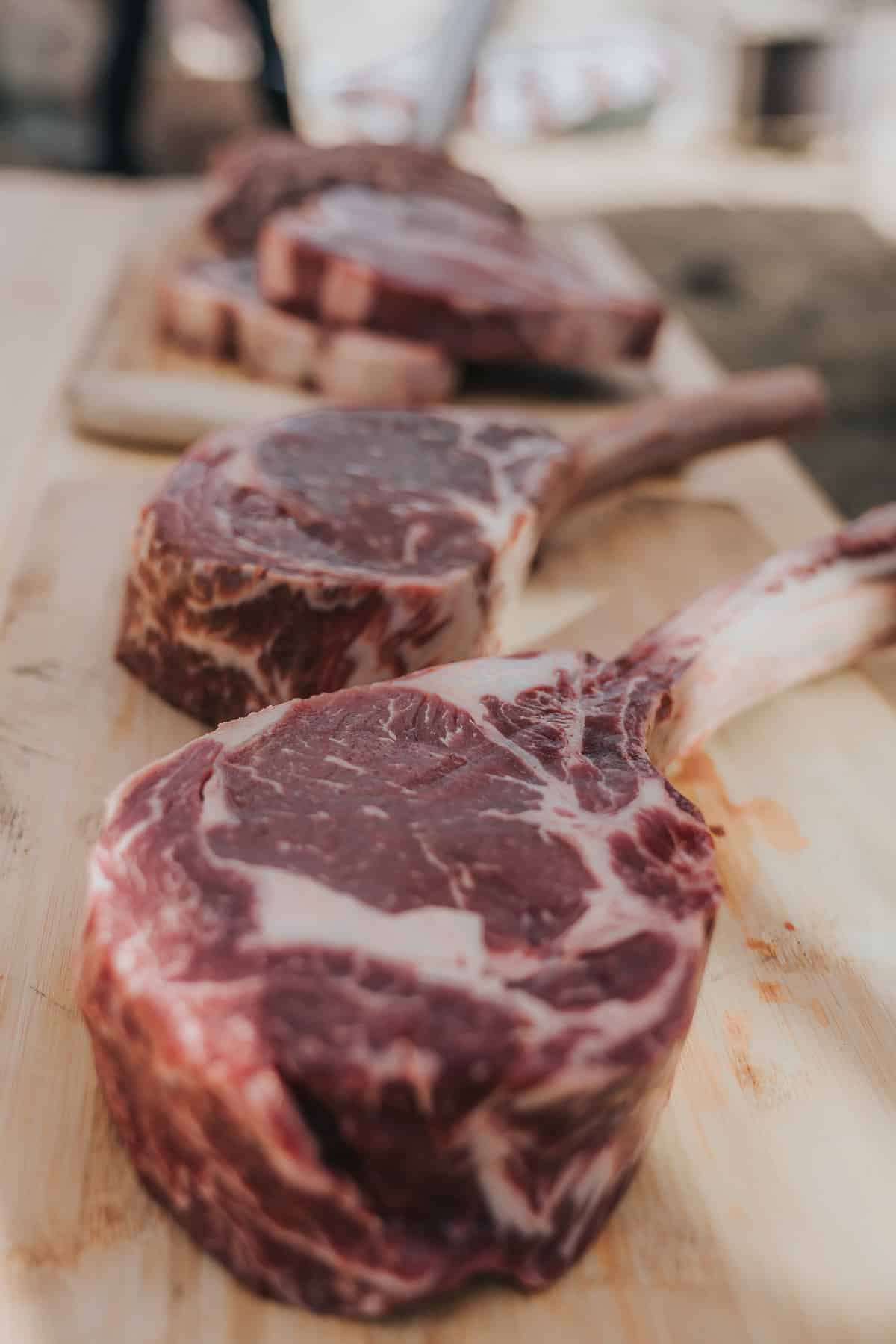
Table of Contents
If you want to take your beef recipes to the next level, understanding the USDA meat grades of beef is a great start. Much like understanding beef labels, understanding the different grades of beef can help you make informed decisions about buying the right beef for your personal preference. In this guide, we’re spilling all the secrets on how to choose the right grade of beef so that your beef recipes come out perfectly.
What are beef grades?
If you’re looking to master the art of beef selection, understanding the beef grading system is your first step. The beef grading system is like a report card for meat, helping us figure out its quality. Just like your school grades, beef gets different rankings based on factors like tenderness and marbling. This system is crucial for both sellers and buyers to ensure everyone knows exactly what they’re getting.
The most common grades of beef in the United States are Prime, Choice, and Select. However, other countries, like Canada and Australia, also have their own grading systems for meat.
Role of USDA in Beef Grading
When it comes to meat grades, the USDA (United States Department of Agriculture) takes the lead role. The USDA ensures fairness and consistency in grading, making sure everyone plays by the same rules. It’s their job to set the standards and make sure the beef you buy is labeled correctly.
The beef grading system in the United States has evolved over the years to ensure consumers get consistent and quality meat products. The roots of beef grading can be traced back to the early 20th century.
In 1927, the U.S. Department of Agriculture (USDA) officially introduced the beef grading system. The goal was to establish a standardized method to assess and categorize the quality of beef based on factors like marbling, tenderness, and overall tastiness. This grading system aimed to provide consumers with information about the meat they were purchasing and help producers and sellers maintain a certain standard.
Factors Considered in Grading Beef
Now, let’s dive into what the judges (or USDA) consider when grading beef. First up, there’s marbling, which is the tiny bits of fat within the meat. Graders look between the 12th and 13th ribs to determine the level of marbling in the cow. The more marbling, the better the grade.
Then, tenderness is key – the easier it is to chew, the higher the grade. These factors, along with color and texture, are carefully examined to give each piece of beef its final grade.
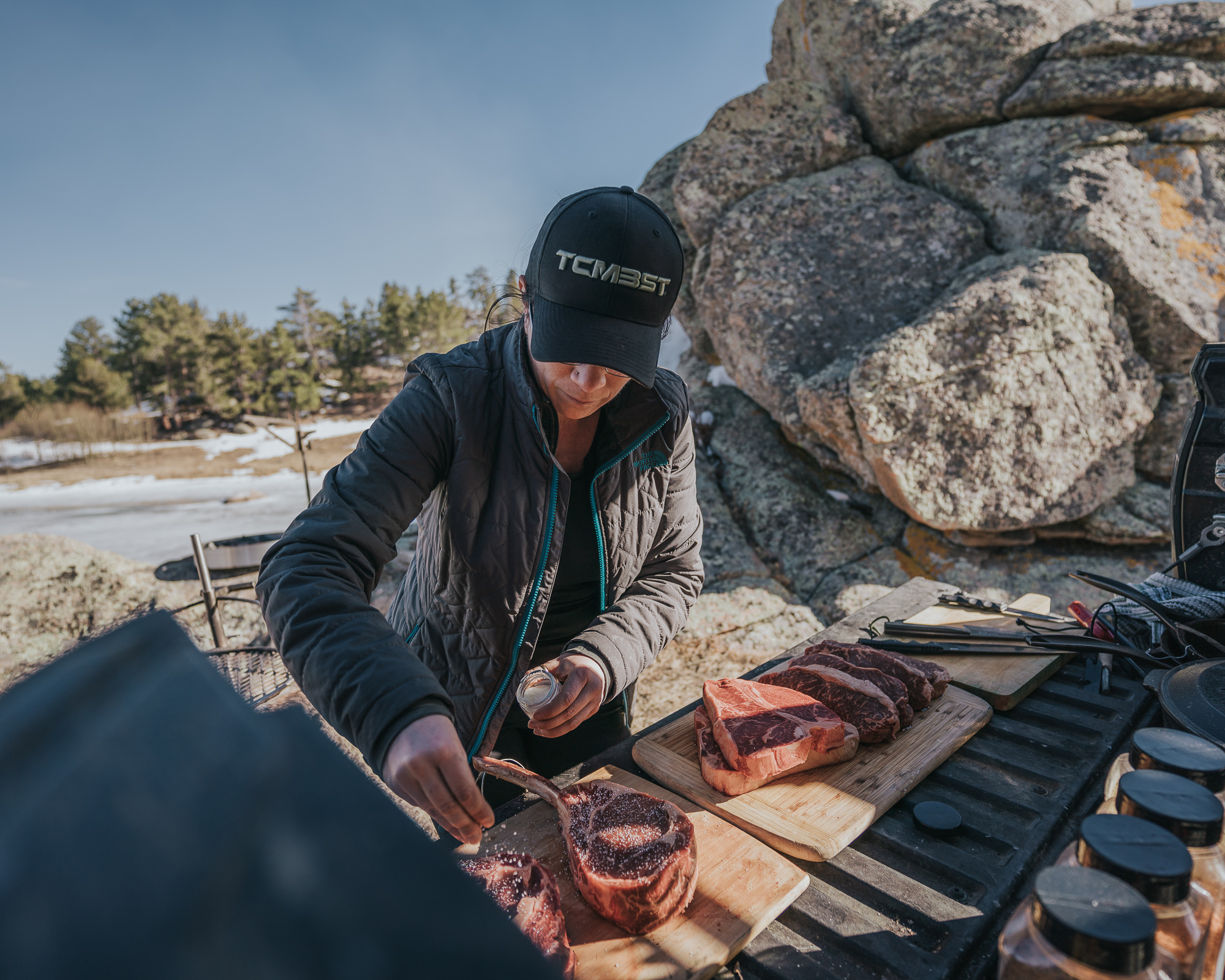
Grades of Beef
Prime, Choice, and Select grade beef is what you will often see in the meat department at your local grocery store.
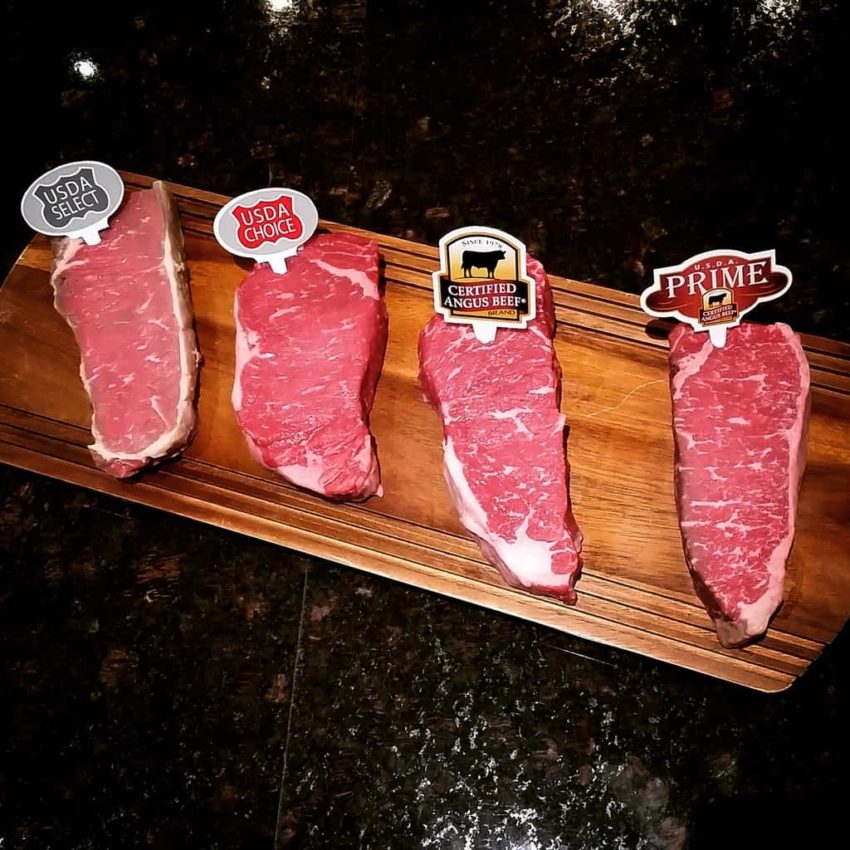
USDA Prime Grade
The highest grade of beef is Prime Grade. Prime Grade beef is the highest quality of beef one can buy at most markets, with tons of marbling from intramuscular fat. The higher fat content provides phenomenal taste and texture, which is why this beef grade is the most expensive and is usually found in high-end restaurants.
Prime Grade Beef comes from well-fed younger beef cattle, lending to its abundant marbling and flavor. However, the marbling isn’t the only thing separating Prime Beef from the rest of the USDA beef grades. The marbling must have a fat content of 8-13% to be considered Prime. You’d usually find Prime Grade types of steak like ribeyes or filet mignon at high-end restaurants.
Cooking Methods
Prime Grade Beef are some of the best steaks for grilling, especially for special occasions. This beef grade also benefits from cooking methods like reverse-searing, sous vide, roasting, and broiling. For example, our reverse-seared prime rib is the perfect recipe for a special occasion like the holidays. If you’re okay with skipping out on the smoky flavor, making sous vide prime rib is another excellent option for cooking this high-quality beef.
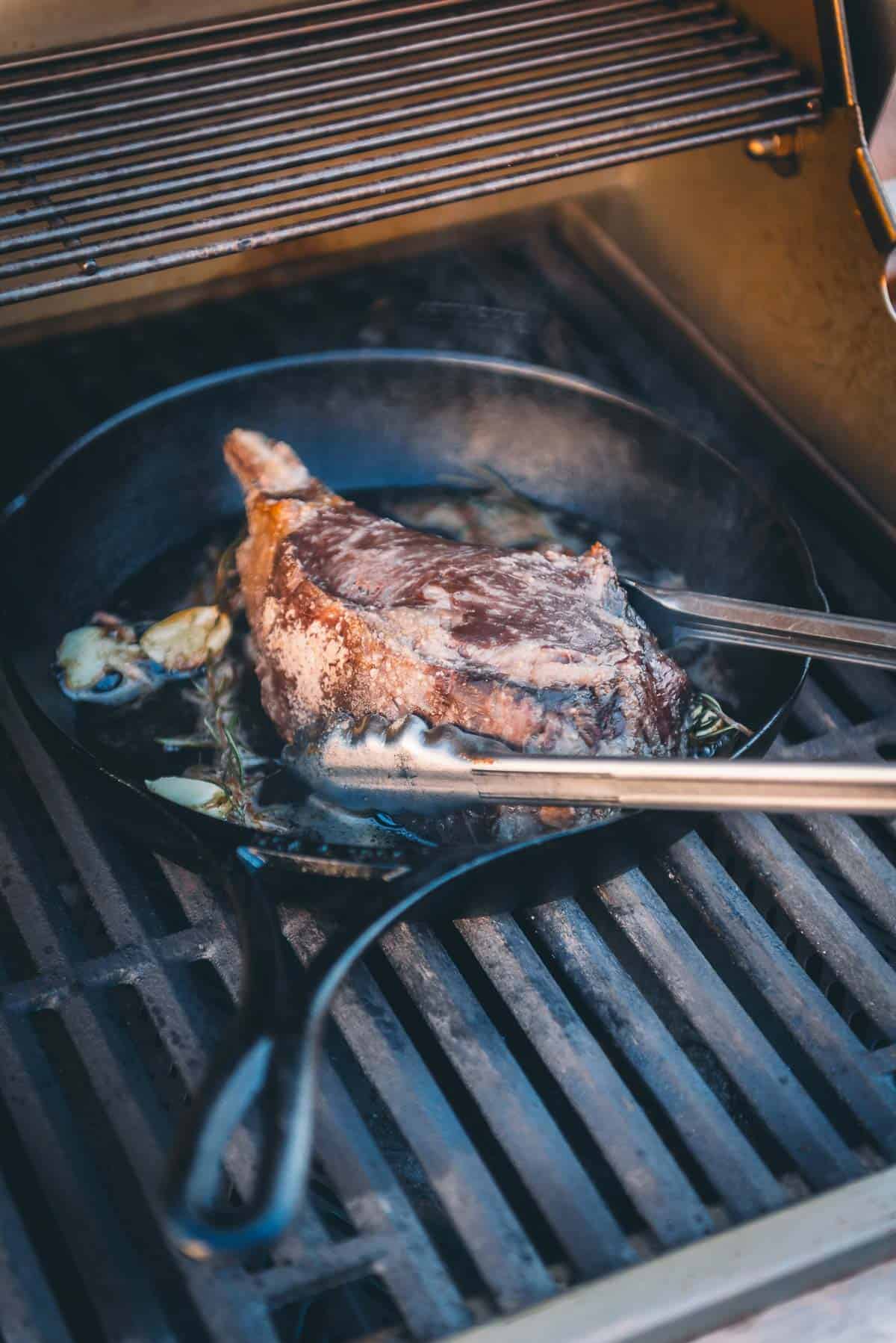
USDA Choice Grade
The next beef grade is Choice Grade Beef. Although it has less marbling than Prime Grade Beef, it’s still very flavorful and tasty. This grade is mostly found in grocery stores for its balance of taste and affordability.
Choice Grade Beef also comes from younger cows but only contains around 4-10% fat content. Although it has slightly less marbling than Prime Beef, it’s still flavorful and juicy. Around 50% of beef found in grocery stores in Choice Grade, making it highly accessible to the public.
Cooking Methods
Choice Beef benefits from the same cooking methods as Prime Beef, like a grilled porterhouse steak or pan-seared top sirloin steaks. If you regularly grill steaks on a gas grill, Choice Grade Beef consists of some of our favorite cheap cuts for grilling so you can get the best bang for your buck.
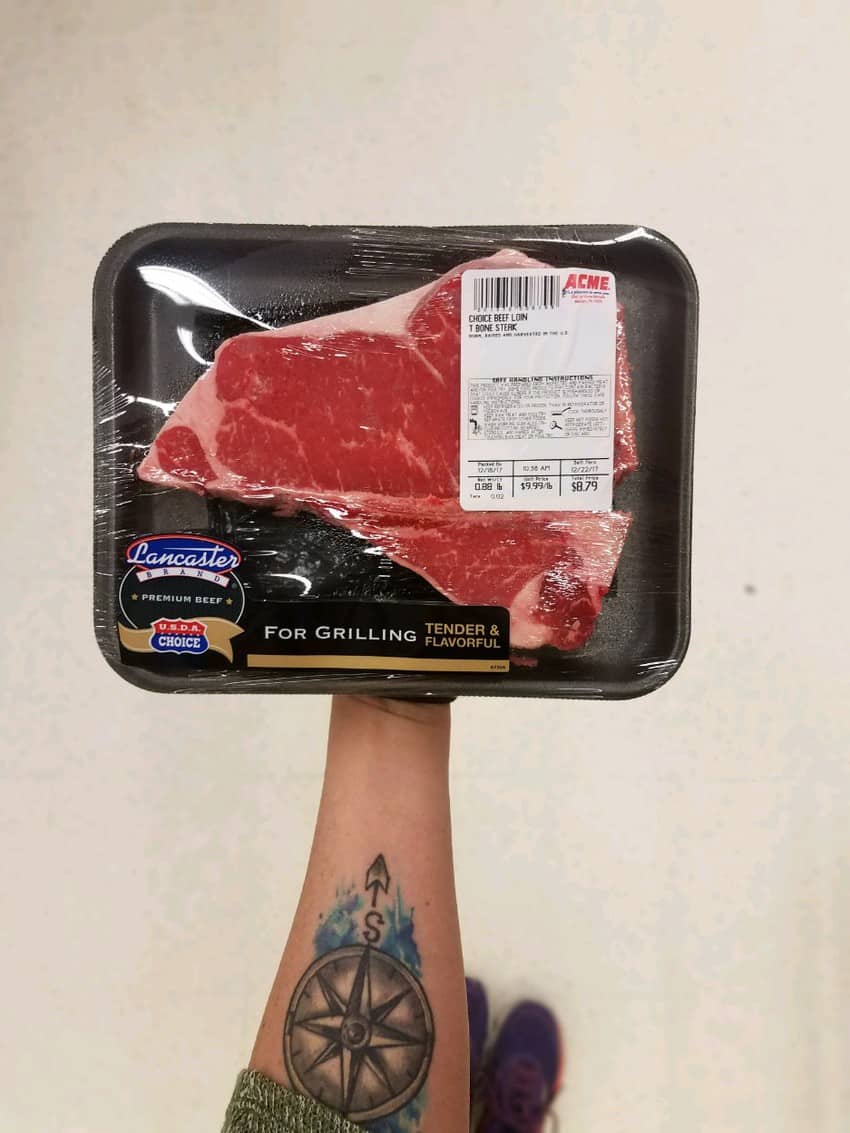


USDA Select Grade
The last and lowest grade on the list is Select Grade Beef. Select grade has the least amount of marbling on the list, making it not quite as flavorful and tender as the other grades of beef. This beef grade is usually found in fast food restaurants for its price point.
Select beef can also come from young cattle and contains around 2-4% fat, making it some of the leanest cuts of beef on the market. It has an even lower fat content than Choice or Prime grades, making it the perfect option for marinating or braising. This beef grade accounts for 21% of beef one can purchase.
Cooking Methods
Since Select Grade is fairly lean, it needs braising or marinating to bring out the maximum amount of flavor, like slow cooker pot roast or grilled flank steak. Don’t forget to cut against the grain for a more tender bite.
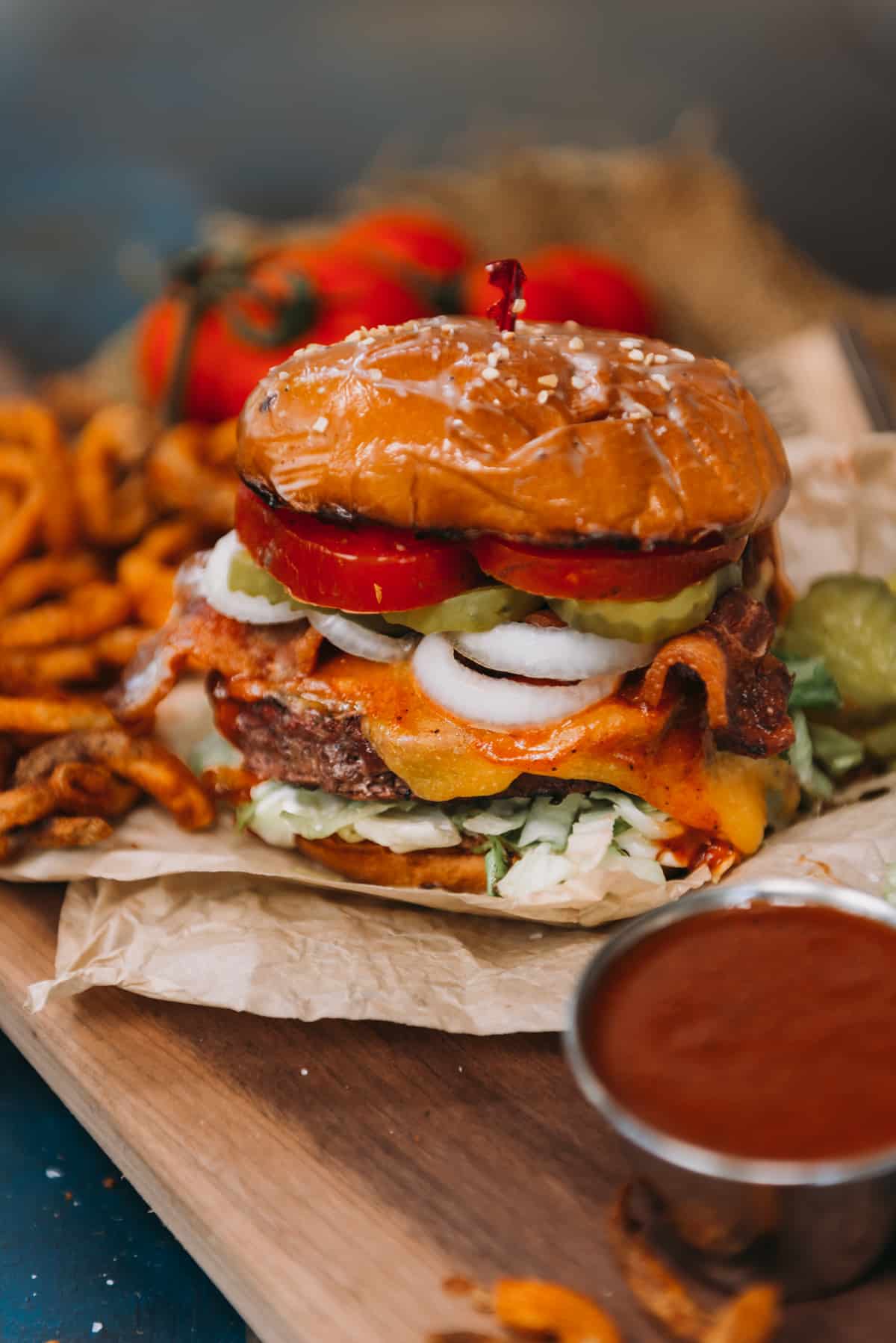
Standard and Commercial Grades
These beef quality grades are typically reserved for “store-brand” cuts of beef, to be used for ground beef, or used for processed meats.
While not as richly marbled as higher grades, commercial beef still delivers good flavor, making it a reliable option for making ground beef patties or grilling the perfect burger.
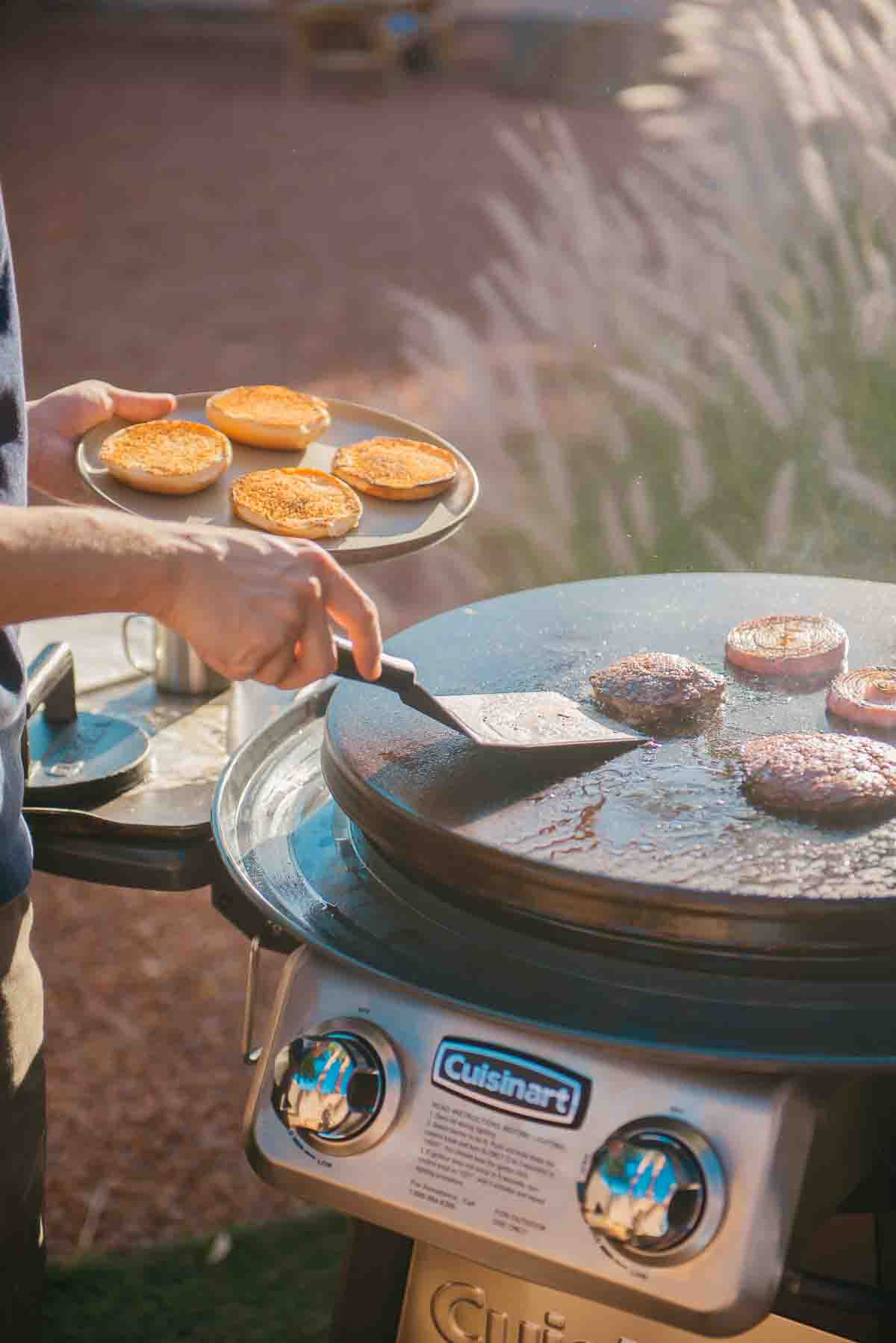
Factors Influencing Beef Grades
Age of the Animal
- Younger vs. Older Cattle: The age of the animal at the time of processing significantly influences beef quality. Younger cows, typically under 30 months old, generally produce more tender and flavorful meat. Their muscles haven’t toughened as much, contributing to a more desirable eating experience.
Older cattle might have tougher meat, making them suitable for slow-cooking methods to break down the fibers. However, ‘vintage beef’ has a unique, rich flavor that we enjoy.
Fat Content
- Intramuscular Fat (Marbling): The fat within the muscle, known as marbling, plays a crucial role in beef quality. It’s the thin white lines running through the meat.
Marbling contributes to tenderness, juiciness, and flavor. Cuts with higher marbling, like those found in prime-grade beef, often result in a more succulent and enjoyable eating experience. However, excessive external fat on cuts may not contribute as much to tenderness and flavor. - External Fat Distribution: While marbling is internal, the amount of external fat (fat on the outside of the cut) can impact cooking methods and flavor. For example, a ribeye steak with a thin layer of external fat can enhance juiciness during grilling.
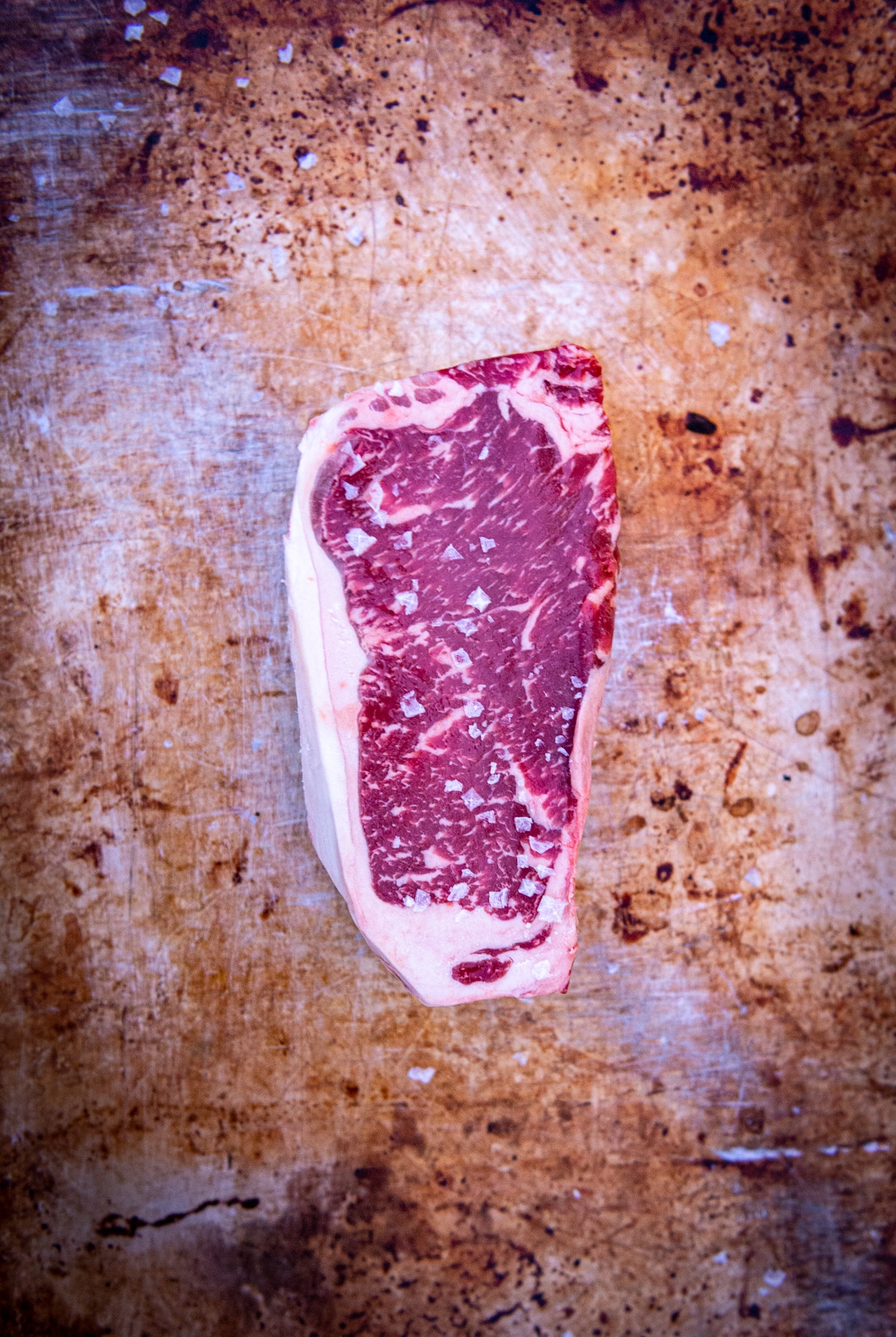
Marbling
- Definition: Marbling refers to the distribution of intramuscular fat within the muscle tissue. It appears as small white streaks or flecks in the meat, not the thick layers of fat on the outside of the meat.
- Impact on Tenderness: Marbling is a key factor influencing tenderness. The fat within the muscle fibers melts during cooking, contributing to a buttery texture and tenderness. Cuts with higher marbling are often associated with premium grades like Prime.
- Flavor Enhancement: Marbling significantly impacts the flavor profile of beef. As the fat melts, it imparts a rich and savory taste, enhancing the overall eating experience. Yes, as the fat melts, meaning some cuts of beef are indeed better cooked past a steak temperature of medium-rare.
- Grading Significance: Marbling is a crucial element in beef grading. Prime Grade beef is known for abundant marbling, while lower grades may have less marbling, resulting in different taste and tenderness levels.
Feed, Breed, and Production Methods
Feed
- Grass-Fed: Cattle that graze on grass for most of their lives produce what’s known as grass-fed beef. This beef tends to be leaner, with a distinct, earthy flavor. The fat content is often lower compared to grain-fed beef.
- Grain-Fed: Cattle that are primarily fed grains, like corn and other ingredients, after grazing on grass yield grain-fed beef. This type of beef is known for its marbling – those tiny streaks of fat within the meat. The result is often more tender and flavorful beef but with a higher fat content.
Breed
There are many breeds of cattle, but here are three popular ones when discussing beef.
- Wagyu: Originating from Japan, Wagyu cattle are known for their intense marbling. Wagyu beef is highly prized for its tenderness and rich, buttery flavor. The pampered lifestyle of Wagyu cattle contributes to the unique quality of this beef and has it’s own independent grading scale. It’s important to know that Wagyu is different than American Wagyu when looking at the label on the meat.
- Angus: Angus cattle are renowned for their well-marbled meat and tenderness. Angus beef is often associated with consistent quality and is commonly found in various markets and restaurants. Both Red and Black Angus are popular in the United States. You may recognize Black Angus on the menu of steakhouses from coast to coast.
- Hereford: Hereford cattle, another popular breed, produce leaner beef compared to Angus. The flavor is robust, and the meat is generally more economical.
Production Methods
- Conventional Farming: In conventional farming, cattle may spend part of their lives grazing on pasture before finishing on a grain-based diet. This method aims to produce beef efficiently and on a larger scale.
- Organic Farming: Organic beef comes from cattle raised without synthetic hormones or antibiotics. They graze on organic pastures and eat organic feed. The focus is on the well-being of the animals and producing beef without synthetic additives. Read more on the regulation of USDA-certified organic in the USDA’s article on Understanding the Basics.
- Grass-Finished: Some cattle are raised exclusively on pasture and grass throughout their lives. This approach, known as grass-finishing, produces leaner beef with a distinct flavor profile. You may notice a more yellow color to the fat due to the diet of the animal.

Impact on Beef Characteristics
The marbling, feed, breed, and method all affect the flavor of your steak.
- Marbling and Tenderness: Feed and breed significantly affect marbling, influencing tenderness and flavor. Grain-fed and certain breeds, like Wagyu, often result in higher marbling, making the beef more tender and flavorful.
- Flavor Profile: Grass-fed beef tends to have a more distinct, earthy flavor due to the cattle’s diet. Grain-fed beef, on the other hand, may have a richer taste due to the marbling from grain consumption.
- Health Considerations: Grass-fed beef is generally considered leaner and may have a different fat composition compared to grain-fed beef.
More Helpful Guides
How To
Mastering Meat Cutting: Why and How to Cut Against the Grain
How to cut steak against the grain: Learn proper meat-cutting technique for tender steak bites by slicing against the muscle fibers with images and tips.
How To
Know your Beef: A guide to Leanest Cuts of Beef
Discover the leanest cuts of beef in our guide. Perfect for health-conscious meat lovers, learn to choose and cook the best lean beef!
Beef Cuts
What is Beef Tenderloin – the Ultimate Guide
What is beef tenderloin? Get to know this premium cut; where it comes from, how to cook it best, + guides on trimming and recipes for roasted and grilled tenderloin.
Beef Cuts
What is Flank Steak? How to Cook, Cut, and Use This Lean Beef Favorite
From marinades to grilling techniques, learn everything you need to know about cooking flank steak like a pro with our comprehensive guide.
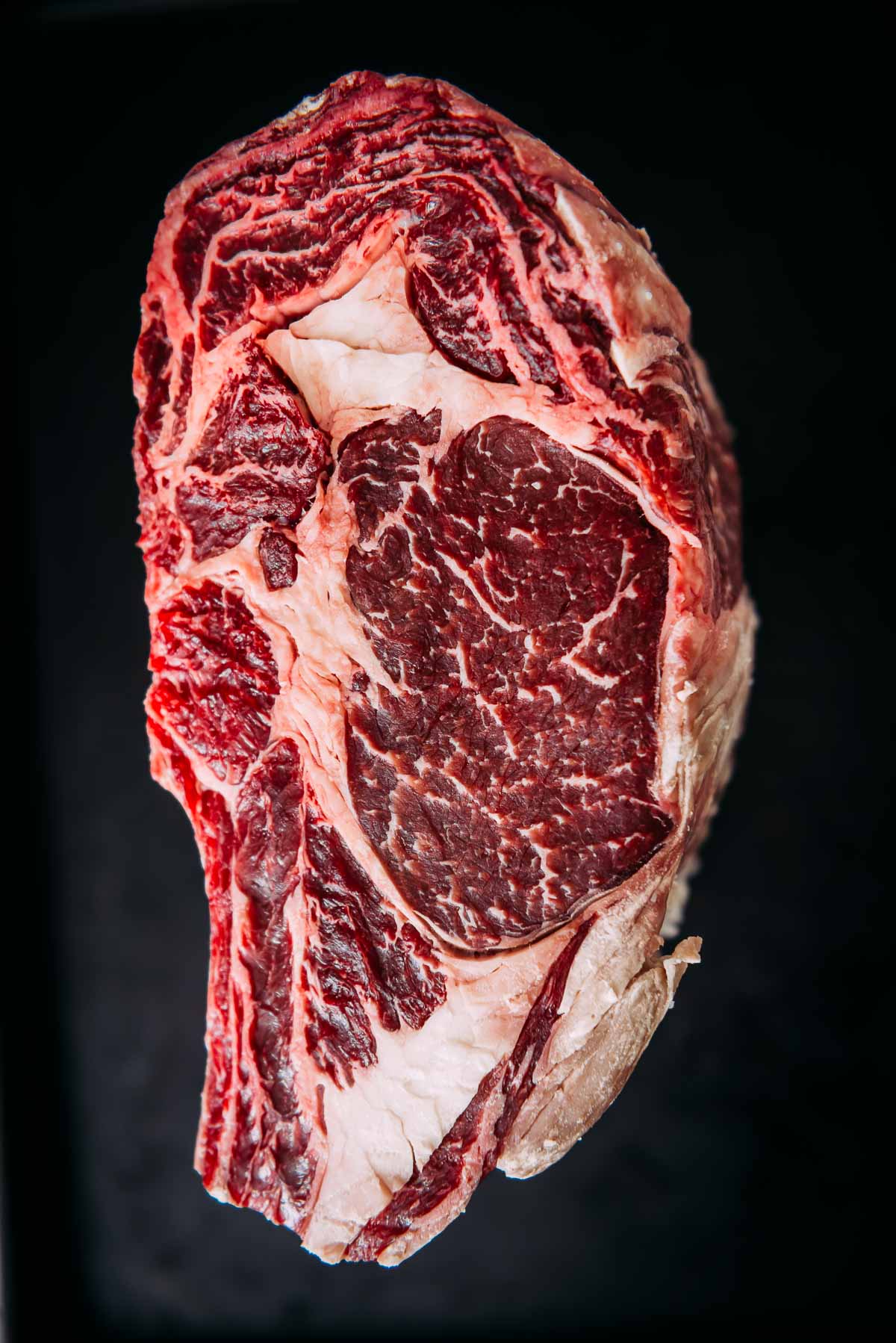
Understanding Beef Grades as a Consumer
Why is it important to know about beef grades? Prime vs. Choice: What is the difference? Well, if you’re like us and skim the weekly circular for what’s on sale to plan ahead or want a certain cut of beef for certain occasions, it’s great to know exactly what you’re buying.
- Quality Assurance: Beef grades ensure you get the desired tenderness, flavor, and juiciness.
- Tailored Experience: Different grades offer distinct taste experiences based on your preferences.
- Value for Money: Understanding grades helps you allocate your budget wisely.
How to select the best Beef Grades for yourself
- Consider the Occasion: Prime for celebrations, Choice for budget-friendly options, and Select for casual meals. They all have their place on the menu.
- Adapt to Cooking Methods: Consider the grade based on the cut and cooking method. Prime for fast, hot grilling or a Choice cut for roasting. Choose based on your cooking method.
- Personal Preferences Matter: Lastly, and most importantly, choose based on your own taste preferences.
Tips for Identifying and Interpreting Beef Grades
- Read Labels: Look for clear grade indications (like the USDA grade seal) on the packaging or ask the butcher.
- Check Marbling: More marbling in Prime. Look for fat streaks for an indication of grade, as not all cuts will have the same marbling; a quick visual check can help you pick.
- Observe Color and Texture: make sure the meat has a bright red color and even texture.
- Ask for Guidance: Ask your local butcher or grocery store staff for insights and cooking tips. You can also order meat online for details and a more in-depth look at USDA quality grades.
Our Favorite Beef Recipes
To sum it up, beef comes in different grades, giving you choices based on what you like and what fits your budget. If you want something affordable and lean, go for Select. If you’re after super-tender and tasty, aim for Prime. Understanding these grades helps you pick the beef that matches what you’re looking for, making your meals exactly how you want them.
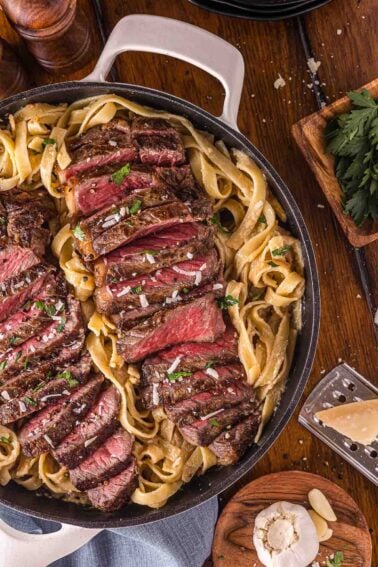

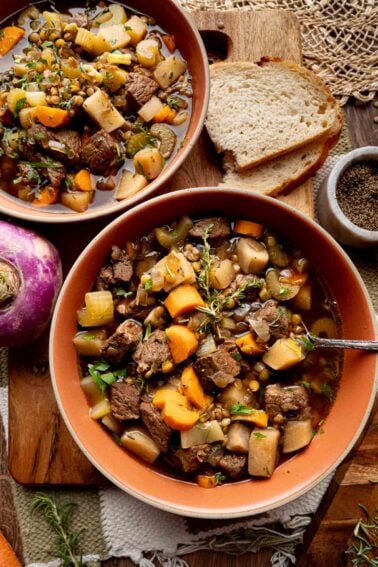
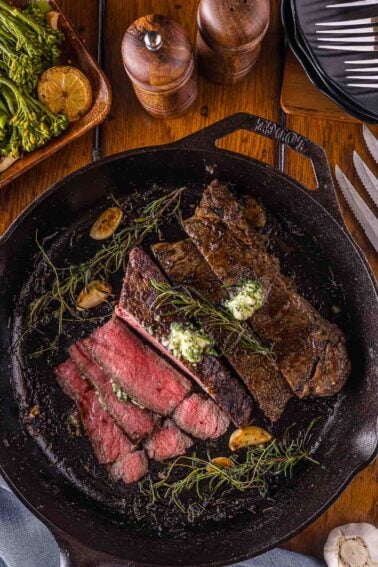

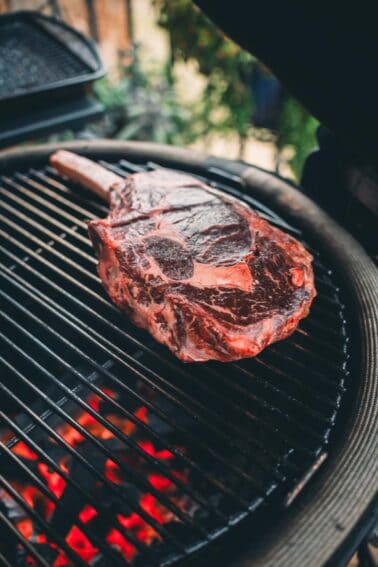
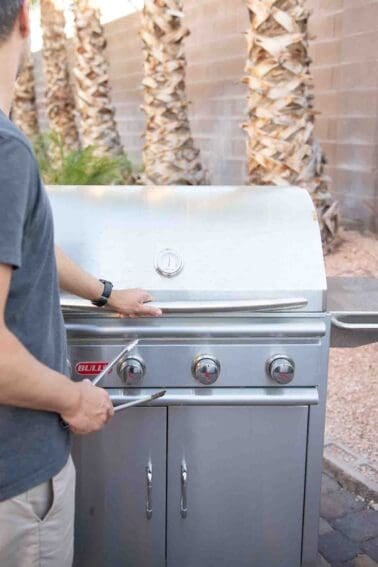
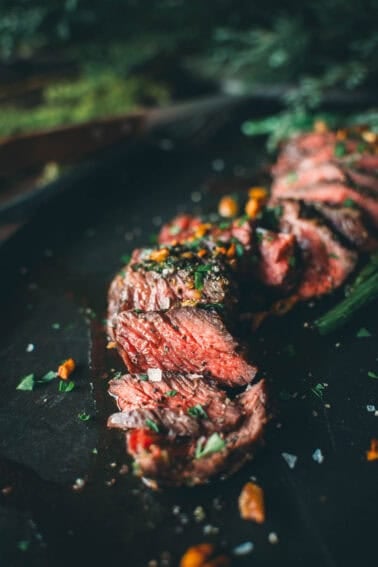
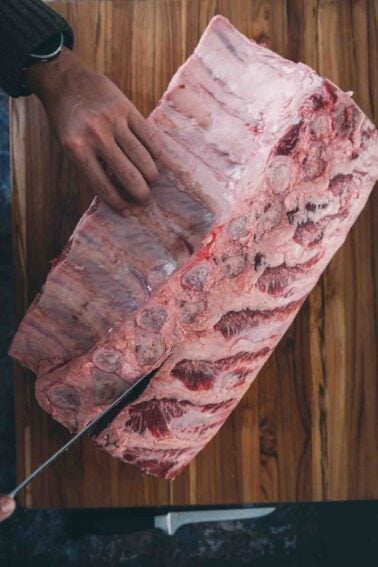









One thing very few articles discuss is the quality of the grades within the grades. For example, a choice ribeye at one particular store will be more tender than a choice ribeye at another store. And it will be consistently more tender, month after month, year after year. How? Why? I researched this long ago and learned that the USDA meat graders are only human and there will be some overlap. Some beef graded choice will be equal to other beef graded prime. And so on. So after the USDA inspects the beef, it’s up for auction. And buyers are hired by the stores to purchase the quality they direct. The USDA graded beef will be carefully inspected by the buyers. Some stores, through their hired buyers, will consistently bid more and pay more for beef they determine is high end Choice, while other stores will consistently pay less for low end Choice. But both end up in the stores marked Choice. Hence, you get better Choice at certain stores and the beef will be consistently better at those stores, even if the CHOICE label is exactly the same at both stores.
And this means, of course, that it’s important that the consumer is not fooled by a lower price tag for Choice at certain stores.
Then there’s the Rancher’s Reserve Beef. As I recall, roughly 20 years ago or so, the farmers were frustrated because some of their select beef was actually very good and selling it as Select was not getting the value they felt the beef deserved. So they decided to make their own grade called Rancher Reserve which was high end Select or sometimes low end Choice but carefully chosen to be a high quality beef. Several stores agreed to sell this Rancher Reserve Beef idea and called it Rancher Reserve beef in the stores. This beef was not labled choice or select. It was simply labeled Rancher Reserve. Two of those stores in my area (among others in other areas) were Harris Teeter and Safeway. However, after a number of years, Safeway opted out and no longer sell “Rancher Reserve.” But Harris Teeter still sells Rancher or a variation of Rancher Reserve – they call it Harris Teeter Rancher. But again, it’s not labeled select or choice.
And Harris Teeter also has their own grade they call USDA Certified Very Tender. I believe this is high end Choice or low end Prime. Sort of like Rancher Beef feathers between Choice and Select.
There’s also color. I would not buy a “bright red” steak or roast. I’ve learned long ago that bright red indicates grass fed, and grass fed, regardless of what label is stuck to the package, is consistently more tough than grain fed. Pink is what I look for, and a pink steak or roast will be consistently more tender than bright red regardless of the marbling. A beautiful well-marbled bright red steak will be tough relative to a beautiful well-marbled pink steak.
And of course, marbling is very important. I will sometimes find a beautifully marbled pink steak or roast behind the glass which is labeled Choice, but I know darned well by looking at it that it’s not choice. It’s Prime, and I know it’s prime, and so I buy it – BOOM – without hesitation because if I don’t, somebody else will! And it’s an absolute winner every time! In the same regard, you can get burned buying a bright red weak marbled roast or even a bright red well marbled roast. Consumers need to have their own criteria and do their own careful inspection.
Obviously, there are health benefits to the bright red, grass fed roasts and steaks relative to grain fed, so that may be a priority for some.
My point is, you can’t just rely on the store grade USDA label.
Thank you
Hey hey Mark, thank you SO much for this reply. I agree, you cant rely ONLY on the USDA labels when making a choice, but its a good guideline to start with. Yes, there are so many other factors that go into the perfect cut of meat. And there are also purveyors now were we can order meat that aren’t utilizing this standard, and it doesn’t make their beef better or worse. I love that this post sparked this comment from you and appreciate the time you took to write it out. This is the sort of conversations we love to have in the GC Meat Labs!
Appreciate you reading and looking froward to hearing from you again 😀